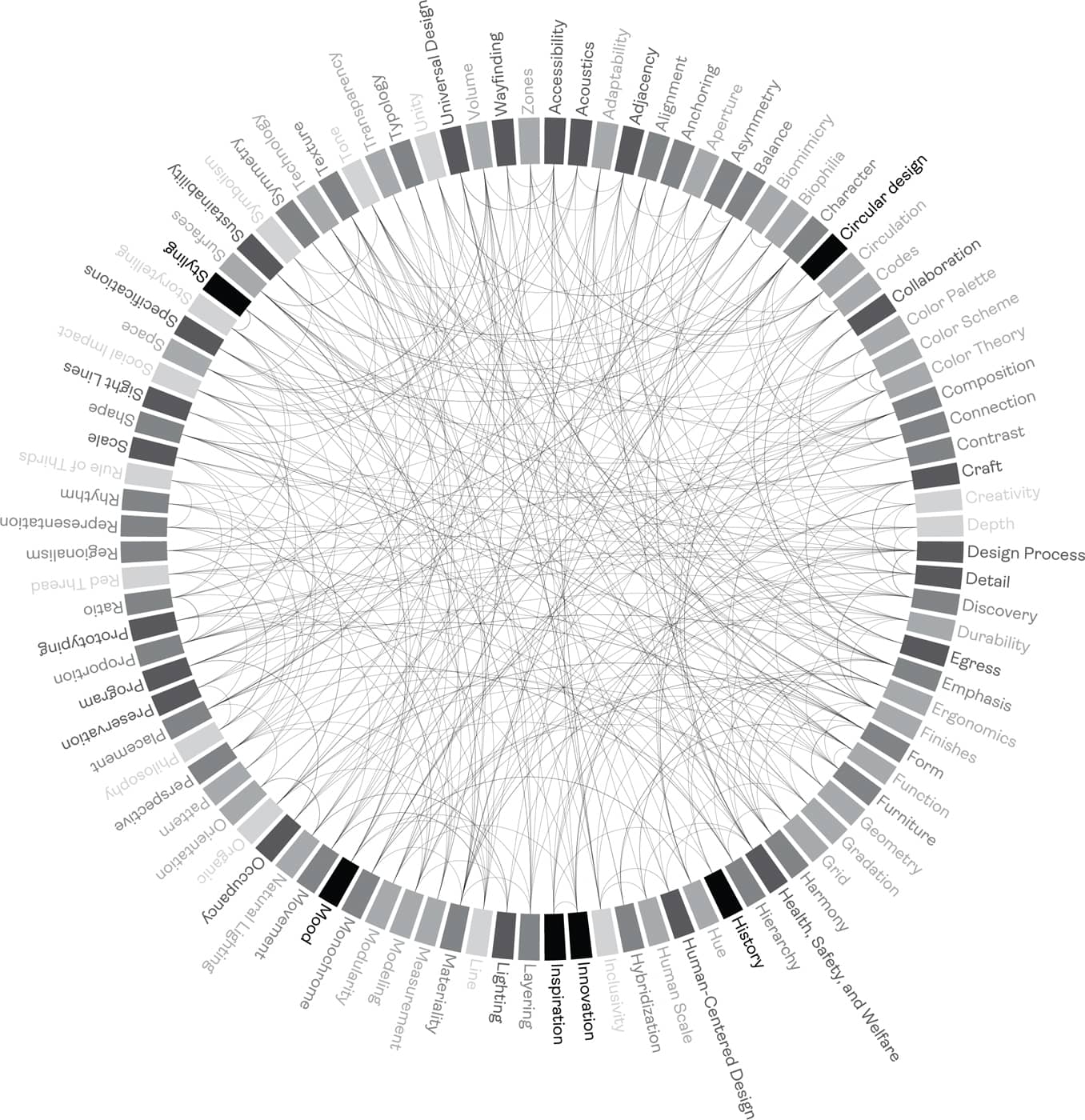Introduction

The profession of interior design is a complex, wide-ranging, and creative career. The skills that an interior designer needs are similarly expansive—from the large gestures of space planning, to the finer scales of wall and millwork details, to knowledge of furniture and upholstery techniques, to final styling, artwork selection, and photographic documentation of a project once complete. The kinds of projects that an interior designer is engaged with can range from work of all scales and types, to work in a single, specialized, category. All types of spaces—single homes and dwellings, apartments and condominiums, retail and hospitality environments, commercial and shared office interiors, learning spaces (from early childhood education to universities), arts and performance spaces, health care and assisted living facilities, and hospitals—can be enhanced by the expertise of an interior designer in collaboration with other design and engineering professions.
Universal Principles of Interior Design presents one hundred essential concepts that are critical to the successful visualization and implementation of interior design, pairing explanations of each topic with visual examples of their application in practice.
Universal Principles of Interior Design organizes these one hundred principles of importance to the profession. Arranged alphabetically, these entries function as essential areas of knowledge that a designer—from hobbyist to student to licensed professional—should be aware of. They attempt to cover many of the key intentions, objective and subjective areas of knowledge, and the needs of a professional practitioner. But this is not intended to be a comprehensive guide for everything a designer needs to be cognizant of. Instead, it is meant to be a collection of fundamental concepts that will point toward further exploration and elicit curiosity regardless of expertise level.
Given the range and scale of an interior design practice, it is helpful to step back and discover the larger ideas that link together these principles. To that end, we have indicated these relationships by including “See Also” links that demonstrate the overlaps and connections inherent to them, but also by an additional comprehensive system that broadly places each principle in higherlevel categories that demonstrate the importance of the work an interior designer does.
Intention These principles focus on the ways in which an interior designer engages with the philosophy, and impact of our work in the world. This includes ideas about cultural specificity and symbolism, how our persons react to spaces, how we occupy and live within, and our intellectual framing of the conditions of the body in space through inclusive and human-centered design.
Objectivity By looking at research and development within the profession, and the disciplines that surround it, these principles include investigations into how our bodies relate to objects and movement in space, how we interact with and perceive color, how our sense of touch responds to material and texture, and how both natural and artificial light impact our built environment. In addition, issues surrounding sustainability and adaptability, and durability and preservation are anchored in the specialized work of subdisciplines that aim to create a cohesive and successful project.
Subjectivity These principles engage with the more elusive elements that make a design complete—principles that operate in the space between intention and technology. Concepts like harmony, balance, symmetry, and their counterparts are considered highly subjective and often highly debated areas of design discourse. These principles, concerned with contentious and complex questions of style, taste, beauty, the “proper” use of materials, furniture, and lighting will always elicit strong opinions and emotions. Navigating these opinions is often complicated by current trends, yet there are lessons to be learned from precedents and history.
Professional These principles are more technical, and often have liability implications, as they are the areas of expertise that involve life safety, coordination with other consultants, standards, specifications, and licensing.
Inspiration As a designer, how, where, and to whom do you look to stay curious, keep abreast of best practices, trends, and developments in the profession, and find the creative spark needed to begin a project? These principles are framed around the media and concepts that have been useful to us as designers in practice. For many, the wealth of magazines, media channels, and websites dedicated to the profession are a constant source of inspiration. Developing a curated collection of inspirations to turn to that is consistently revisited with a discerning eye is a critical aspect of being a design professional.
This book is for interior design students, practitioners, and educators, as well as others who seek to broaden and improve their understanding of and expertise in interior design. We hope that it encourages further investigation into this remarkable and creative field, and opens eyes and minds to the possibilities of a satisfying design practice. Regardless of expertise, we hope this book finds a place in your library, and continues to prompt curiosity and inspiration for everyone.
